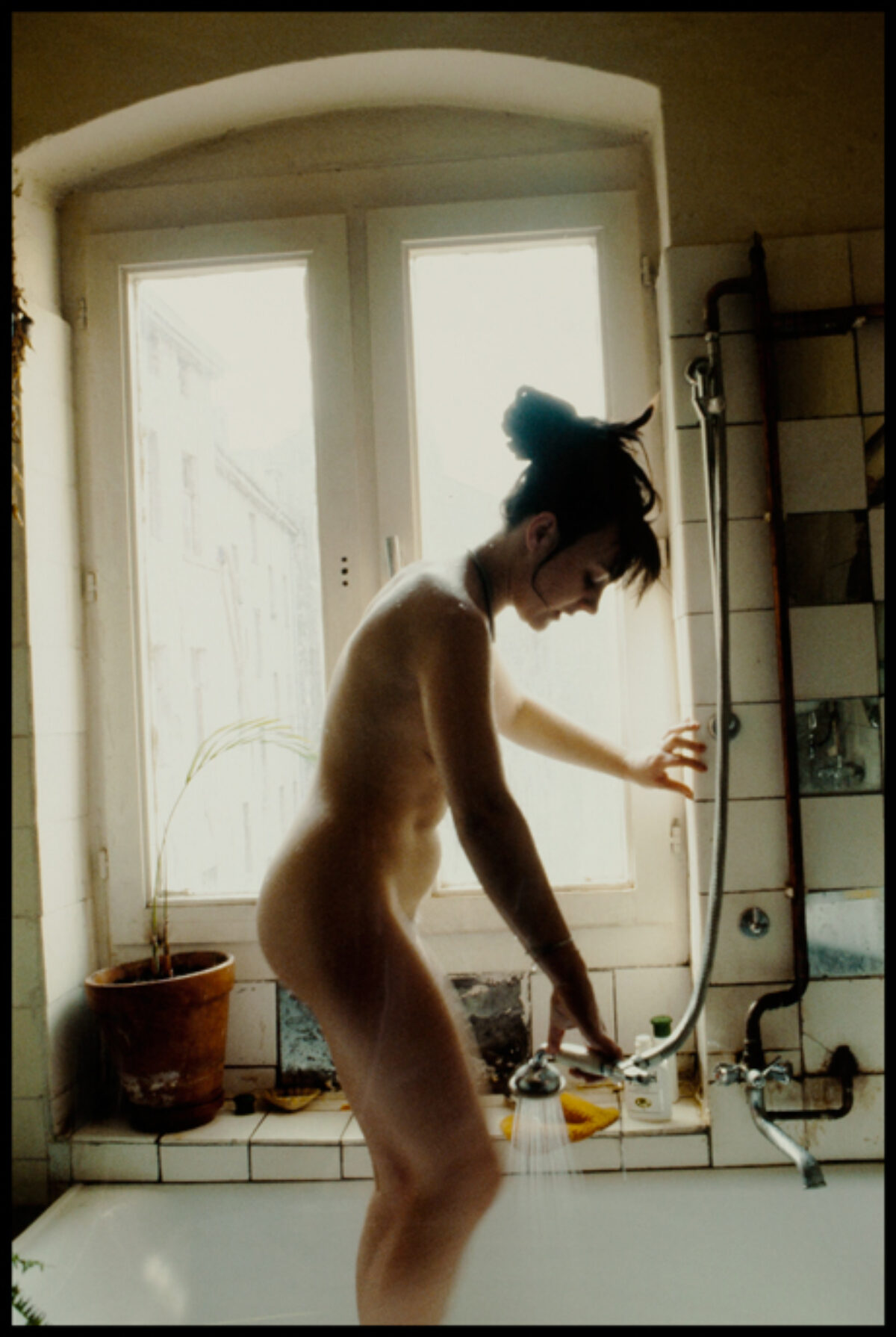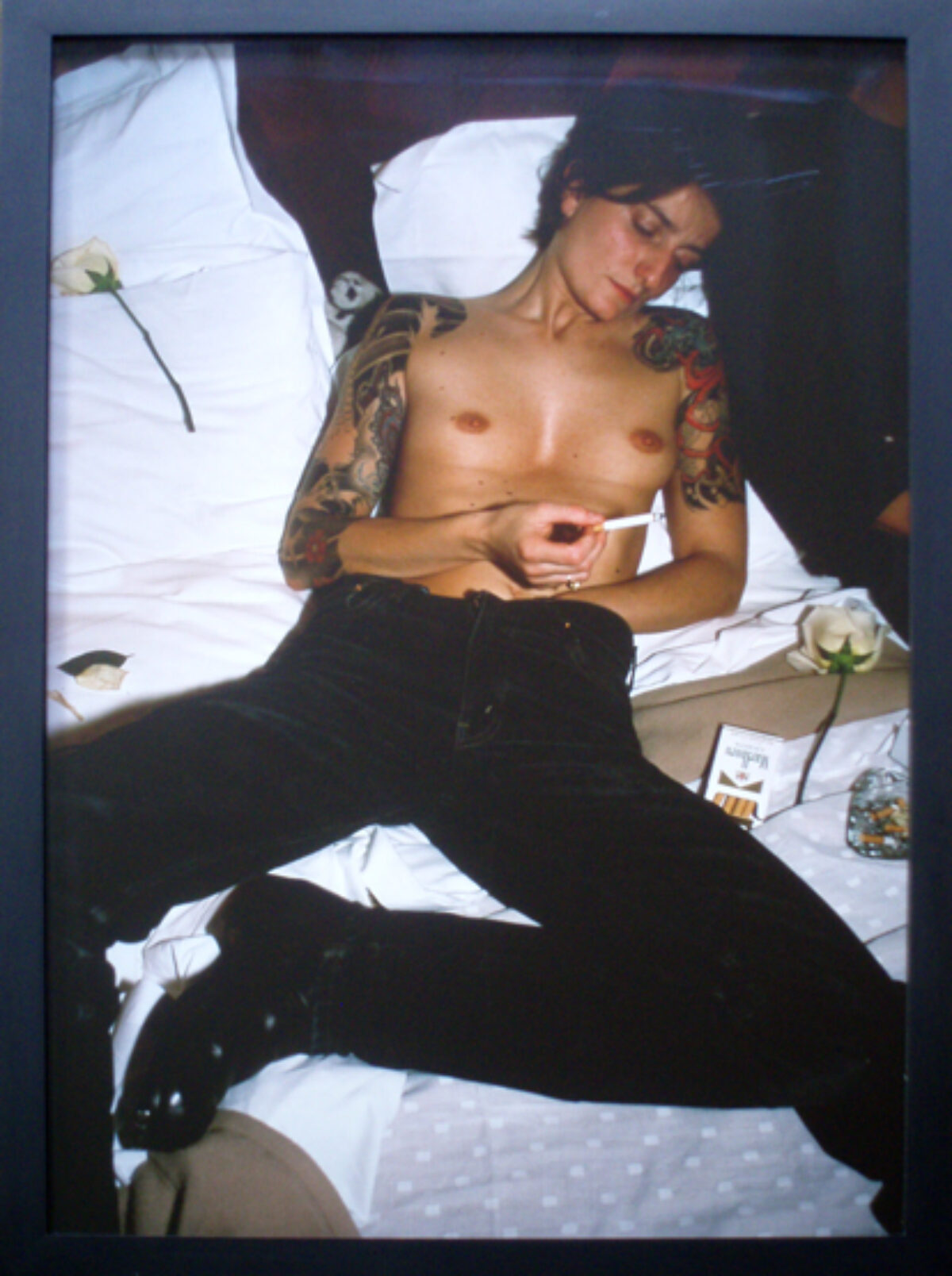Born in 1953 in Washington D.C., USA
Nan Goldin became popular at the end of the 1980s with her shocking series of photographs. Why shocking? Because this was the first time someone had tried to photographically document the artistic underground where sex, drugs, and violence were a part of everyday life. Between 1979 and 1986, Goldin was obsessed with documenting her own life in the Bowery, a New York City neighborhood with run-down streets, cheap rent, bars open to the early hours of the morning, and always providing an opportunity for a quick drug fix. Goldin herself lived in the heart of this community made up of post-punk musicians, unappreciated artists, drug dealers, homosexuals, professional and unprofessional girls, outcasts, and lunatics of all kinds. A wide range of photographs are taken in her apartment, such as a couple making love in the shower, girls with wild make-up on the toilet peacefully sleeping after an exhausting night, or girlfriends getting another dose of heroin. Inspired by the American photographer Larry Clark, who followed the lives of drug addicts and young gays with his camera in the 1960s, Goldin continues in this all-revealing documentation of life which seems to be a never-ending intoxication with drugs and sex.
However, this life is exhausting, deceitful, and full of extremes and excesses where sexual obsession, gay or straight, is surpassed only by drug addiction. Therefore, “The Ballad of Sexual Dependency”, is undoubtedly a fitting title for this series, which Goldin took from the drama “The Three-Penny Opera” by German author, Bertolt Brecht. Sex, excesses and drugs, typical not only for the American artistic underworld of the 1980s, are captured here in an intimacy never seen before, which forces the photographer as well as us spectators to be accomplices to the act, or if not, at least insiders. When AIDS begins to appear among Goldin’s circle of friends, this inexhaustible documentary photographer, boldly though with dignity, does not stop observing how illness and death takes over her surroundings. Emaciated bodies, feverish looks, desperation and fear, but also glimpses of tenderness, gratitude and affection can be seen in her photos. Cookie, a reckless girlfriend who is dying of AIDS in front of Goldin’s lens, quickly becomes for New York’s artistic scene the embodiment of the destructive power of this horrible disease. Other series of photographs follow in the 1990s, such as “I’ll Be Your Mirror”. However, these do not even begin to achieve the same intensity as the powerful and tender images that brought Goldin to fame in the 1980s.
Text by Noemi Smolik


